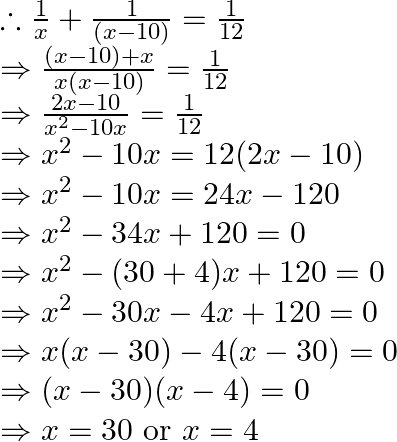Let B takes ![]() days to complete the work.
days to complete the work.
Therefore, A will take ![]() days.
days.

Number of days to complete the work by B cannot be less than that by ![]() ; therefore, we get:
; therefore, we get: ![]()
Thus, B completes the work in 30 days.
Let B takes ![]() days to complete the work.
days to complete the work.
Therefore, A will take ![]() days.
days.

Number of days to complete the work by B cannot be less than that by ![]() ; therefore, we get:
; therefore, we get: ![]()
Thus, B completes the work in 30 days.